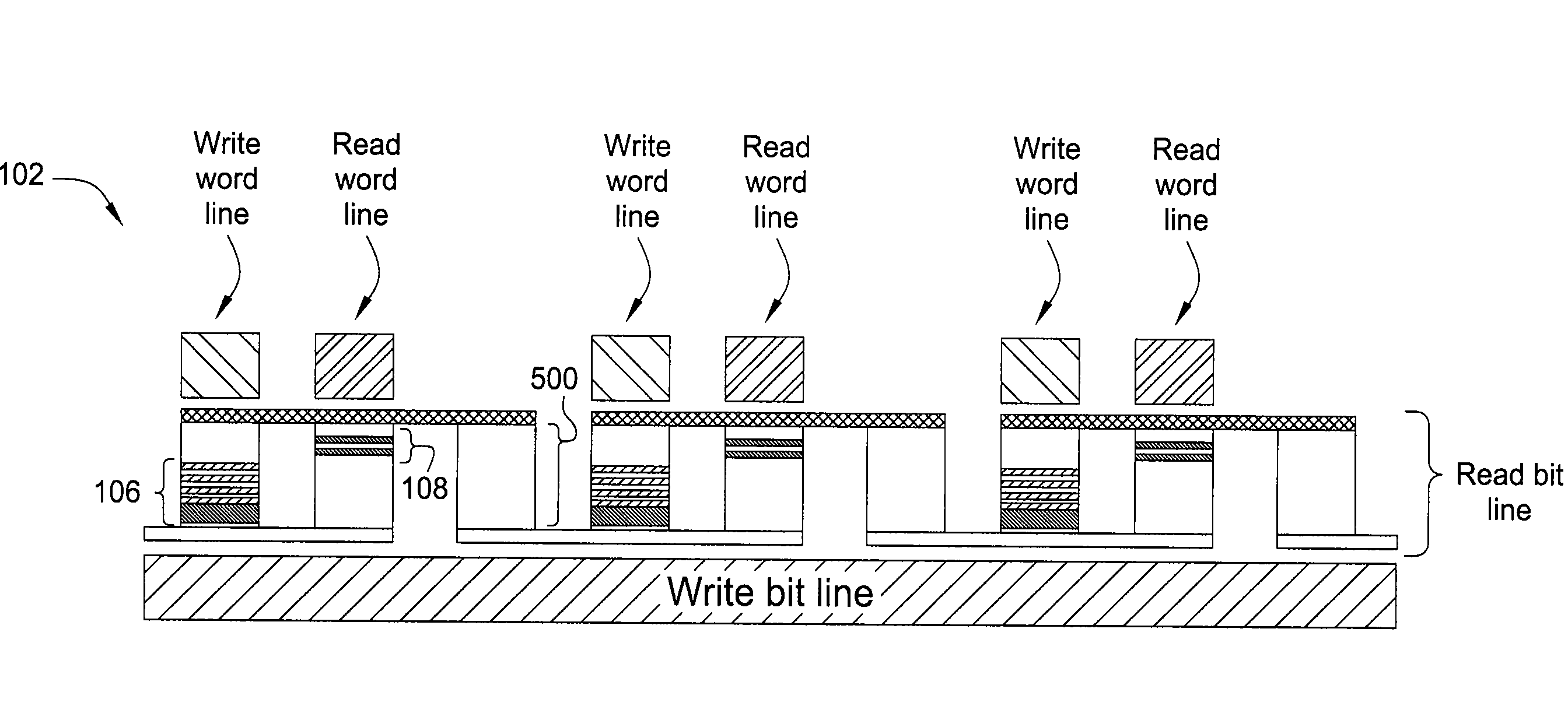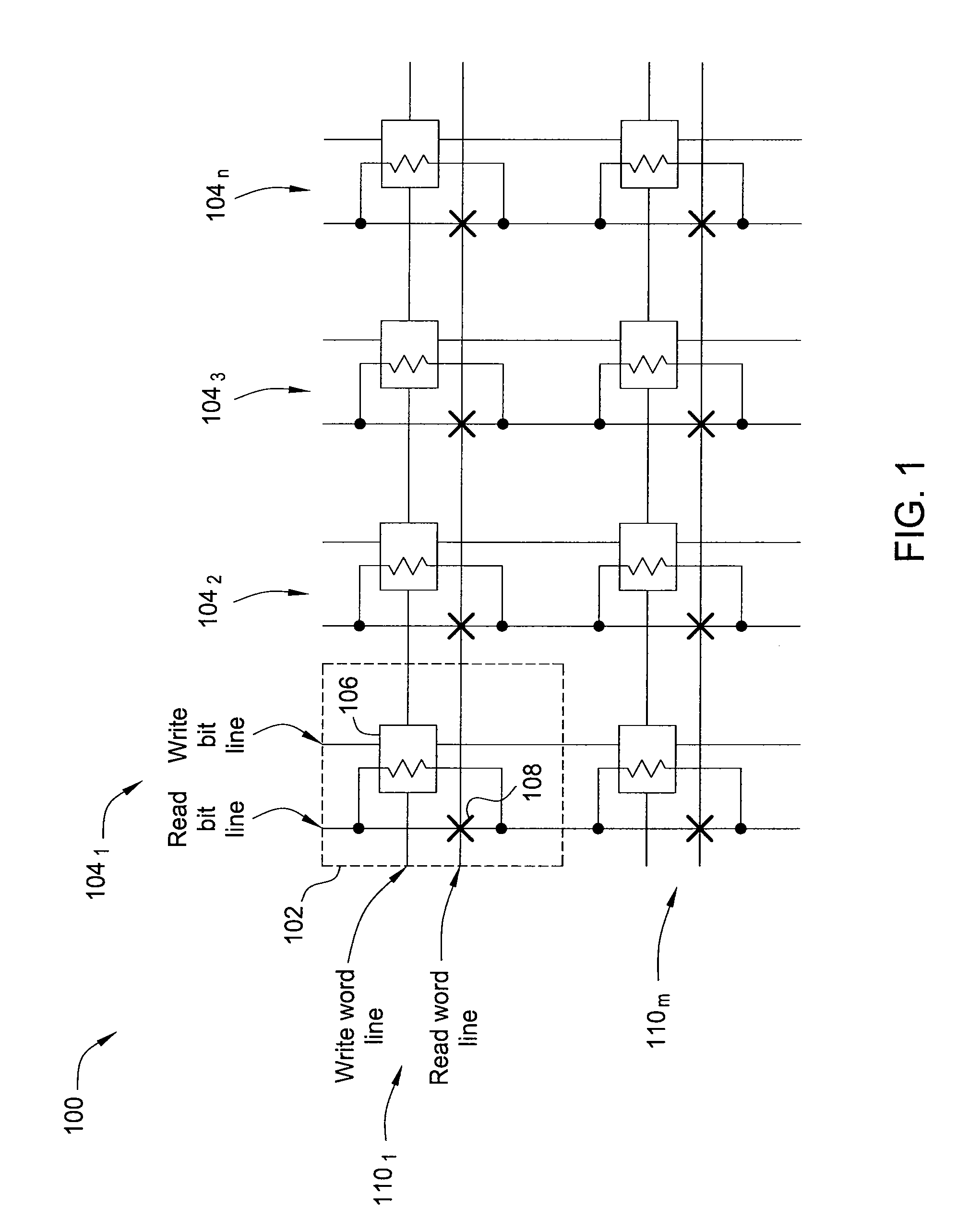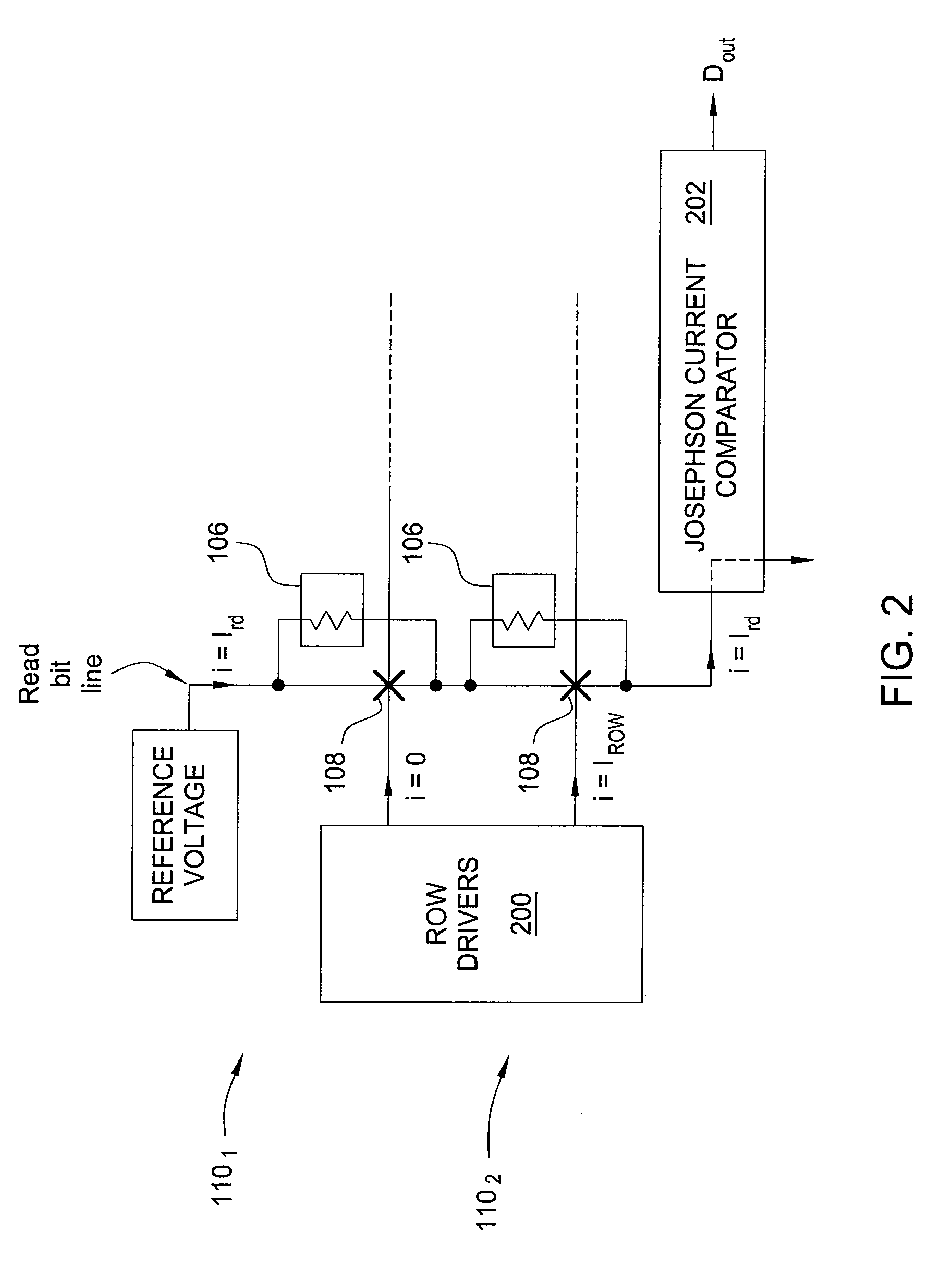Hybrid superconducting-magnetic memory cell and array
a superconducting and magnetic memory technology, applied in the field of hybrid magnetic memory including magnetoresistive elements and superconducting elements, can solve the problems of wasting the processor's potential computational power, discharging a great deal of power, and unable to meet the needs of high-capacity, high-capacity random access memory,
- Summary
- Abstract
- Description
- Claims
- Application Information
AI Technical Summary
Problems solved by technology
Method used
Image
Examples
first embodiment
[0016]FIG. 1 is a schematic diagram illustrating a magnetic random access memory (MRAM) array 100, according to the present invention. In one embodiment, the MRAM array 100 is a two-dimensional array.
[0017]As illustrated, the MRAM array 100 comprises a plurality of memory cells, an exemplary one of which is designated as memory cell 102. As illustrated, a first plurality of these memory cells is wired in series along the read bit line to form one column of the MRAM array 100 (see, e.g., exemplary column 1041). Two or more of these columns 1041-104n (hereinafter collectively referred to as “columns 104”) are then positioned adjacent to each other, along with appropriate write word lines and read word lines along each resultant row 1101-110m (hereinafter collectively referred to as “rows 110”), to form the two-dimensional MRAM array 100.
[0018]In one embodiment, each memory cell in the MRAM array 100 is configured in accordance with the exemplary memory cell 102. Thus, each memory cell...
second embodiment
[0034]FIG. 7 is a schematic diagram illustrating an MRAM array 700, according to the present invention. In one embodiment, the MRAM array 700 is a two-dimensional array.
[0035]As illustrated, the MRAM array 700 is configured in a manner substantially similar to the MRAM array 100 illustrated in FIG. 1 and comprises a plurality of memory cells, an exemplary one of which is designated as memory cell 702. As illustrated, a first plurality of these memory cells is wired in series along the read bit line to form one column of the MRAM array 700 (see, e.g., exemplary column 7041). Two or more of these columns 7041-704n (hereinafter collectively referred to as “columns 704”) are then positioned adjacent to each other, along with appropriate write word lines and read word lines along each resultant row 7101-710m (hereinafter collectively referred to as “rows 710”), to form the two-dimensional MRAM array 700.
[0036]In one embodiment, each memory cell in the MRAM array 700 is configured in acco...
PUM
 Login to View More
Login to View More Abstract
Description
Claims
Application Information
 Login to View More
Login to View More - R&D
- Intellectual Property
- Life Sciences
- Materials
- Tech Scout
- Unparalleled Data Quality
- Higher Quality Content
- 60% Fewer Hallucinations
Browse by: Latest US Patents, China's latest patents, Technical Efficacy Thesaurus, Application Domain, Technology Topic, Popular Technical Reports.
© 2025 PatSnap. All rights reserved.Legal|Privacy policy|Modern Slavery Act Transparency Statement|Sitemap|About US| Contact US: help@patsnap.com



